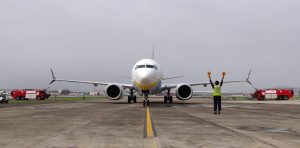Return of INS Vikrant: Wrecker-in-chief against Pakistan in 1971 War

By Shivansh Mishra
New Delhi, September 10: Prime Minister Narendra Modi oversaw the commissioning of the INS Vikrant at Kochi last week to mark the return of the emperor of the Indian Ocean whose namesake is firmly etched in the war history, being the wrecker-in-chief against Pakistan in the 1971 War.
Aircraft carriers have been a great asset in marine warfare, which offers incomparable military assistance in warfare. For several year aircraft carrier has been a symbol of prestige and power for the navies across the world and is not a mere big vessel that engages in warfare as it mostly leads as the capital ship of a carrier strike/battle group.
Vikrant’s journey began as the HMS Hercules, an aircraft carrier in the British Royal Navy, in 1943, during the World War II. The war ended before the ship’s construction work could be completed, and in May 1946, work on the ship was suspended. Only 75 per cent of the work could be completed and was docked in Scotland for the next 10 years.
After the war, the navies of nations like the United Kingdom wanted to sell the ships they no longer needed, and the Indian government bought the HMS Hercules in 1957 from the British government. Hercules was towed to Belafast, Ireland, and rest of the construction was completed and modifications were made according to the requirements of the Indian Navy.
Vikrant was 210 meters long and 39 meters wide, displacing 19000 tons under full load. It was powered by two Parsons geared steam turbines with three boilers which could propel it at maximum 25 knots and had a range of 12000 nautical miles (roughly 22,000 km). It had a total complement of 1,110 including officers and sailors.
The ship finally arrived in India on November 3, 1961, and formally join the Indian Navy fleet in the Bombay Harbour.
Four years later, in the India-Pakistan war of 1965, Vikrant was approximately 20 years old and became unfit to participate in the war and thus, was kept in a dry dock in the Bombay harbour, while it was been refitted.
1971 Bangladesh liberation war
The ship was aging, but the Vikrant was India’s first ever aircraft carrier and has been a matter of pride for the Indian Navy. Thus, when war erupted again in 1971, the Indian Navy was determined to make sure that INS Vikrant should play an active role in the course of the war.
It was a tough call, then fleet operation officer Captain Gulab Mohanlal Hiranandani writes in his book titled ‘Transition to Triumph: History of the Indian Navy (1965-1975)’, that “the Vikrant had suffered many internal fatigue cracks and fissures in the water drums of her boilers and these could not be repaired by welding”.
The warship now had become more than 25 years old but despite the doubts about its capabilities, it became a crucial warship and nucleus of the Eastern Fleet.
Vikrant played a major role in India’s decisive victory in the 1971 war with Pakistan. It helped suppress the ground movements and resupply of the Pakistan Army in the east by blockading East Pakistan (now Bangladesh).

Initially, when the pilots began their training in July 1971, only six aircraft (Sea Hawks) were available which were later increased to their full combat capability of 18 aircraft. The pilots and crew of the INS Vikrant underwent intense combat training.
Vikrant was deployed in Chittagong and was ordered to strike Chittagong and Cox’s Bazar harbours, six sea hawks were launched from the Vikrant. As soon they reached their targets, they attacked shipping in Chittagong and Cox’s Bazar harbors, sinking or damaging most ships carrying 500 pounds of bombs. Among these were two gunboats and rivercraft, a warehouse, and three merchant ships. The river ports of Khulna, Changla, and Mongla were also severely damaged.
These strikes also followed up the attacks on a large building in Chittagong city, which had been reported by intelligence to the house of the Pakistani military personnel. Following the attack, airstrikes from the Vikrant hit their next target, i.e cantonment area of Chittagong, several Pakistani army barracks were destroyed. Strikes conducted by the sea hawks were accompanied by simultaneous attacks on Cox’s Bazar by Breguet Alize aircraft, also deployed by the Vikrant.
In just 10 days, over 300 strike sorties were flown by aircraft from the Vikrant. The warship had exceeded expectations, proven instrumental in establishing total control in the Bay of Bengal, and air superiority in East-Pakistan airspace.
Hence, despite numerous challenges that plagued the INS Vikrant, the warship played a pivotal and winning role in the Bangladesh Liberation War against Pakistan.
(Author is a researcher with Public Policy Research Centre)







